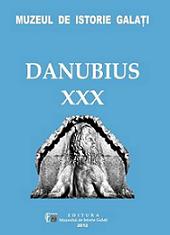L’impacte des événements de l’été 1940 sur les habitants d’origine juive de Bessarabie
The impact of the events from the summer of 1940 on the Jew inhabitants of Bessarabia
Author(s): Florin StanSubject(s): History
Published by: Muzeul de Istorie „Paul Păltănea” Galaţi
Keywords: 1940; Jews; Bessarabia; camp; ghetto; deportees
Summary/Abstract: This study, based on historiographic acquisitions and documents from the funds of the National Archive of the Republic of Moldova, Chişinău, the Archive of the National Council for the Study of the Security Archives from Bucharest and the Romanian Military Archives from Piteşti, outlines the consequences of the events which took place after the annexation of Bessarabia, the North of Bukovina and Herţa by the Soviet Union in the summer of 1940, “tragic year in the history of Romanians”, on the inhabitants of Jewish origin. After the liberation of these counties the following year by the Romanian-German troops, associated within “Barbarossa” operation, unleashed on June 22, 1941, the Romanian authorities initiated Jews’ deportation from these territories to Transnistria. The measure was “justified” by the need to “ensure” the back of the front, the Jews being considered a hostile mass and judged in corpore for the pro-communist and anti-Romanian attitude of some of their co-nationals during the surrendering of the eastern territories in 1940 and the ensuing Soviet occupation. The camps and ghettos organised after the liberation were meant to gather the Jews in order to deport them across the Dniester. The text underlines that the sufferings this ethnic group had to endure given the abuses of the Romanian administration led to a drastic decrease in the number of Jews in the territory between Prut and Dniester, a direct consequence of the events from the summer of 1940, which seriously affected the borders of Greater Romania.
Journal: Danubius
- Issue Year: XXX/2012
- Issue No: 1
- Page Range: 275-292
- Page Count: 17
- Language: French

